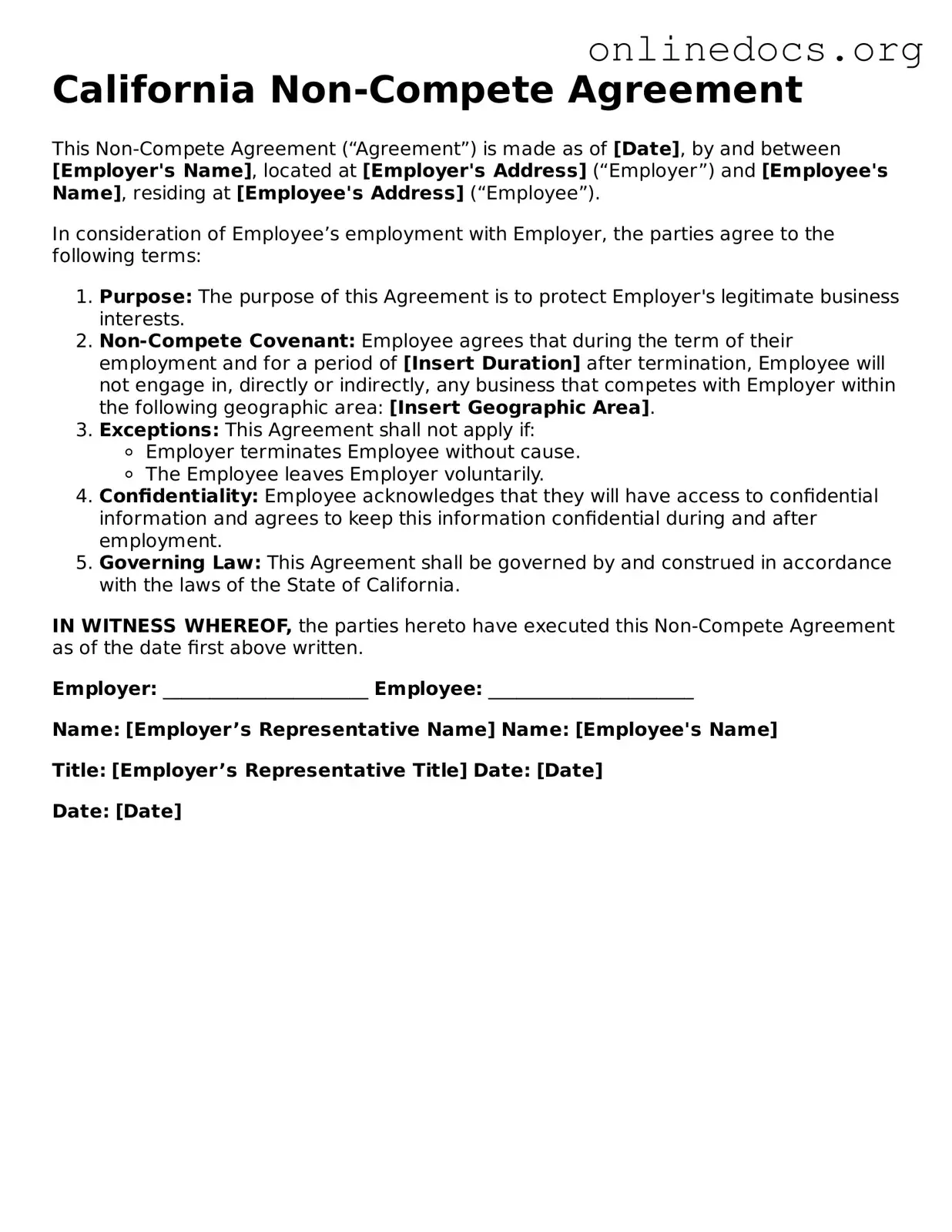A Non-disclosure Agreement (NDA) is a legal document designed to protect sensitive information shared between parties. Like a Non-compete Agreement, it restricts one party from disclosing confidential information to others. Both agreements aim to safeguard business interests and intellectual property. However, while a Non-compete Agreement focuses on limiting where and how an employee can work after leaving a job, an NDA specifically deals with the sharing of proprietary information during and after employment.
A Non-solicitation Agreement prevents an employee from soliciting clients or employees of the company after they leave. This document is similar to a Non-compete Agreement in that it seeks to protect the company's business relationships and workforce. Both agreements serve to maintain a competitive edge by limiting the actions of former employees. However, a Non-solicitation Agreement is often less restrictive than a Non-compete Agreement, as it may only apply to specific clients or employees rather than imposing a broader employment restriction.
An Employment Agreement outlines the terms and conditions of employment between an employer and employee. It often includes clauses related to confidentiality and non-competition. Like a Non-compete Agreement, it establishes expectations and responsibilities. However, an Employment Agreement is more comprehensive, covering various aspects of the employment relationship, while a Non-compete Agreement focuses solely on post-employment restrictions.
A Confidentiality Agreement is similar to a Non-disclosure Agreement but can also be part of a broader employment contract. It protects sensitive information and trade secrets. Both agreements aim to ensure that employees do not disclose proprietary information. However, a Confidentiality Agreement can exist independently of employment, while a Non-compete Agreement is specifically tied to employment and the conditions under which an employee can work after leaving.
A Trade Secret Agreement focuses on protecting specific trade secrets of a business. It is similar to a Non-compete Agreement in that both seek to prevent former employees from using confidential business information against the employer. However, a Trade Secret Agreement is more narrowly focused on specific secrets, while a Non-compete Agreement deals with broader employment restrictions and competitive practices.
The New York Trailer Bill of Sale form is a vital document for the transfer of ownership of a trailer in the state of New York. It serves as a legal record confirming the sale and purchase between two parties. This form not only safeguards the buyer and seller but also ensures compliance with state regulations, and further information can be found at legalformspdf.com.
An Independent Contractor Agreement is used when hiring freelancers or contractors. While it is not a direct counterpart to a Non-compete Agreement, it may include similar clauses that restrict the contractor from competing with the company or soliciting its clients. Both agreements aim to protect business interests, but an Independent Contractor Agreement typically has a different focus, emphasizing the terms of the contractor's work rather than post-employment restrictions.
A Separation Agreement outlines the terms under which an employee leaves a company. It often includes clauses regarding non-compete and non-solicitation. Like a Non-compete Agreement, it aims to protect the company's interests after an employee's departure. However, a Separation Agreement may also address severance pay and other post-employment benefits, making it a broader document than a Non-compete Agreement.
A Release of Claims Agreement is used when an employee agrees to relinquish any future claims against the employer in exchange for certain benefits. This document can include non-compete clauses to prevent the employee from working with competitors. Both agreements serve to protect the employer's interests, but a Release of Claims Agreement primarily focuses on legal claims rather than employment restrictions.
